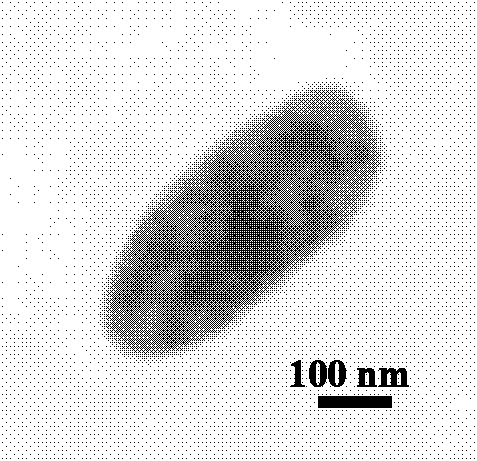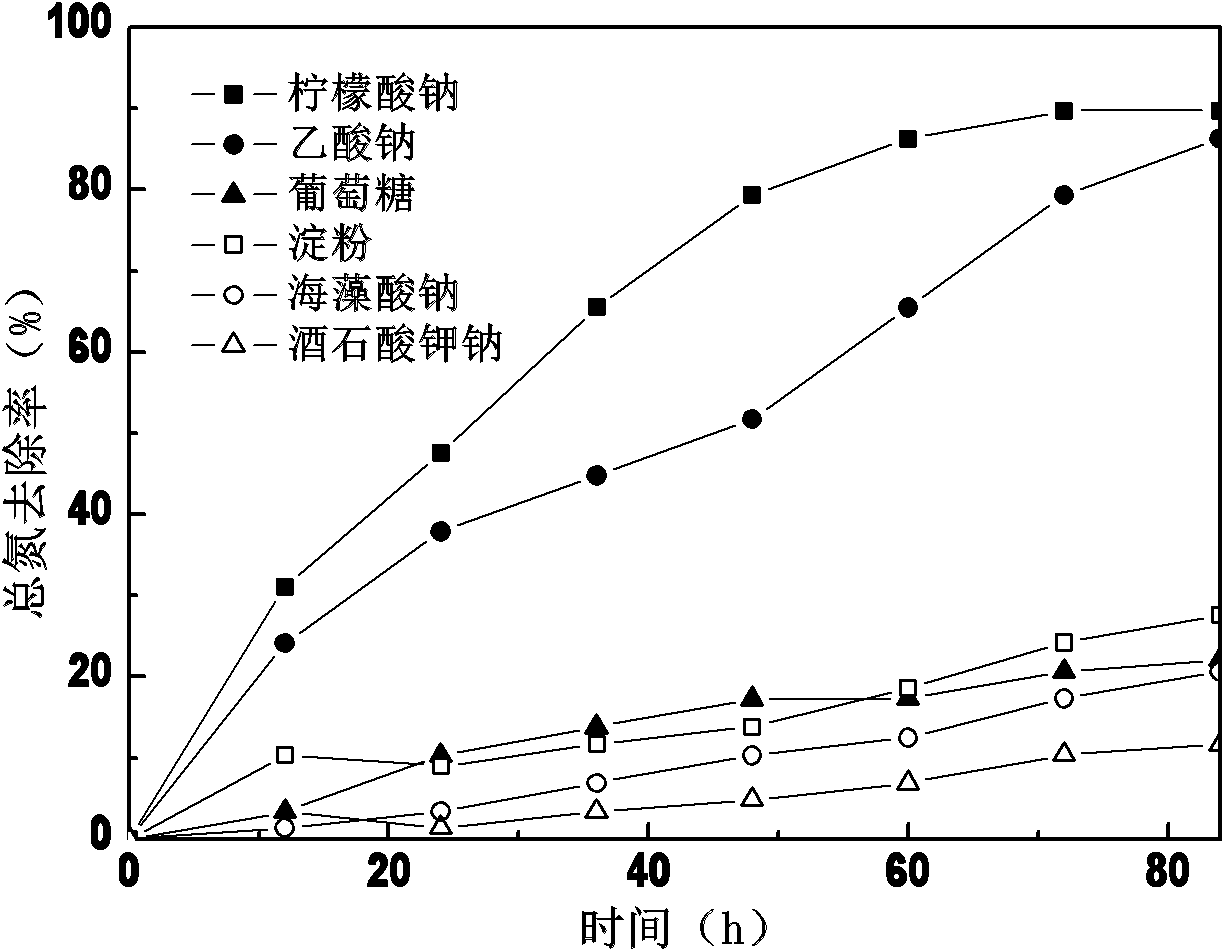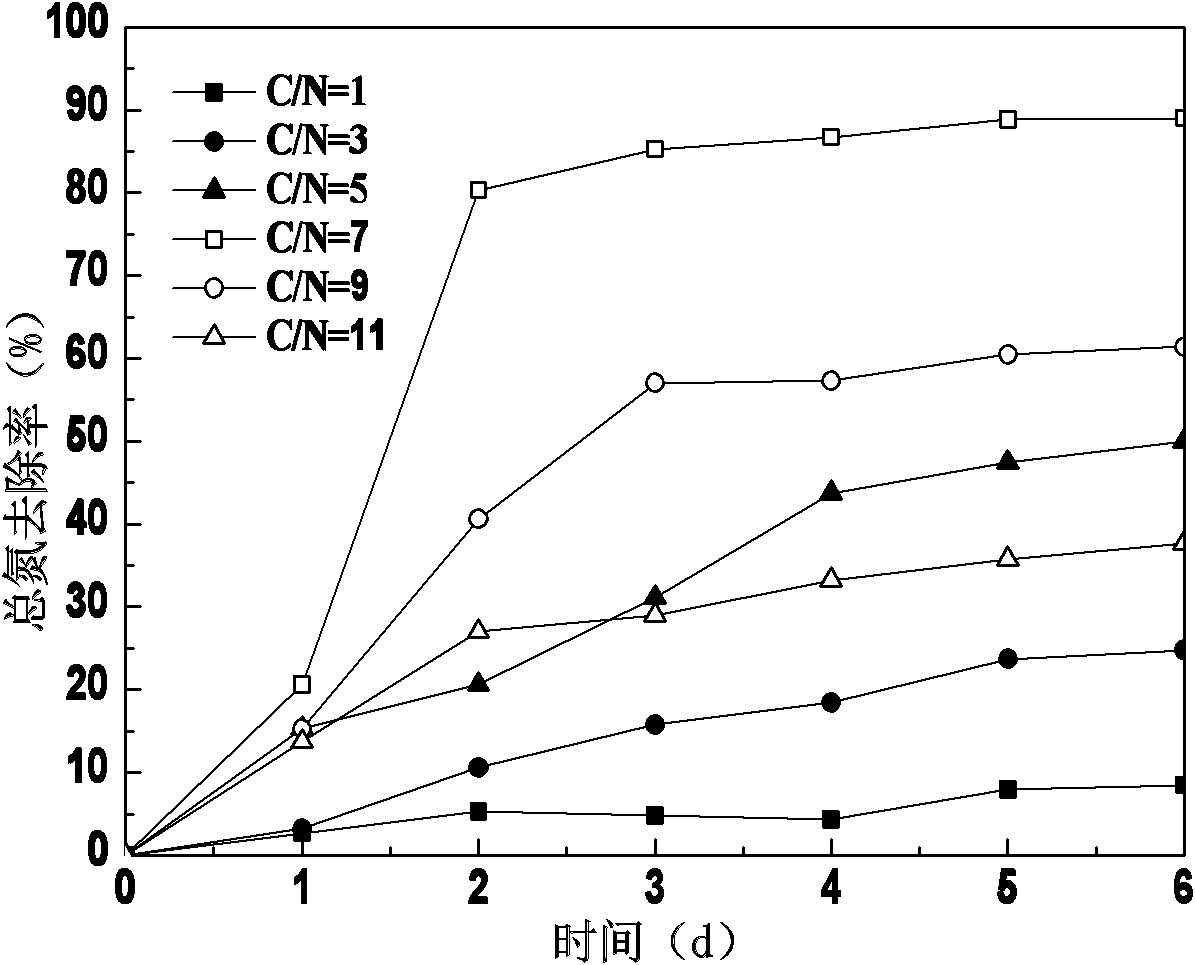Denitrifying bacterial strain and application of the same in water body for nitrogen removal together with wetland plants
A denitrifying bacteria and denitrification technology, applied in the field of environmental microorganisms, can solve the problems of little research and achieve stable denitrification effect, easy to cultivate, and good practical application prospects
- Summary
- Abstract
- Description
- Claims
- Application Information
AI Technical Summary
Problems solved by technology
Method used
Image
Examples
Example Embodiment
[0033] Example 1 Isolation and identification of bacterial strains of the present invention:
[0034] (1) Culture medium:
[0035] A. Strain isolation, purification and preservation medium ( / L): CH 3 COONa, 2g; Peptone, 15g; Yeast extract, 3g; Glucose, 1g; NaCl, 6g; KNO 3 , 1.5g; pH controlled at 7.0~7.2.
[0036] B. Strain screening, denitrifying medium (DM: Denitrifying Medium) ( / L): CH 3 COONa, 2g; KH 2 PO 4 , 0.4g; MgSO 4 ·7H 2 O, 0.6 g; CaCl 2 ·2H 2 O, 0.07g; KNO 3 , 1g; Tris buffer 12mL; trace elements 2mL; pH controlled at 7.0 ~ 7.2.
[0037] If the above-mentioned medium is made into a solid medium, 1.5% agar is added.
[0038] (2) Separation and purification of Paenibacillus XP1:
[0039] Weigh 10 g of the soil sample in the rhizosphere of Rhizoma chinensis and place it in a 250 mL conical flask, add 100 mL of sterile water and a few glass beads, and shake on a shaker for 15 min to disperse the soil sample evenly. After the soil sample was dispersed, let ...
Example Embodiment
[0055] The cultivation of embodiment 2 strain of the present invention
[0056] (1) Medium used
[0057] A, strain preservation medium ( / L): CH 3 COONa, 2g; peptone, 15g; yeast extract, 3g; glucose, 1g; NaCl, 6g; agar, 12g; KNO 3 , 1.5g; pH controlled at 7.0~7.2.
[0058] B. Strain denitrifying medium (DM: Denitrifying Medium) ( / L): CH 3 COONa, 2g; KH 2 PO 4 , 0.4g; MgSO 4 ·7H 2 O, 0.6 g; CaCl 2 ·2H 2 O, 0.07g; KNO 3 , 1g; Tris buffer 12mL; trace elements 2mL; pH controlled at 7.0 ~ 7.2.
[0059] If the above-mentioned medium is made into a solid medium, 1.5% agar is added. Sterilize at 121°C for 20 minutes before use.
[0060] (2) Culture conditions
[0061] The Paenibacillus XP1 stored on the slant of the preservation medium was scraped with an inoculating loop to scrape a ring of bacterial fur, and inoculated into a 250 mL conical flask containing 200 mL of preservation medium or denitrification medium, and cultured in a 30°C constant temperature incubator. 12...
Example Embodiment
[0062] Embodiment 3 The denitrification performance of the strain of the present invention under optimum denitrification conditions
[0063] The experiment was carried out in 250mL conical flasks, each containing 100mL denitrification wastewater, and the content of various substances in the wastewater was adjusted to make XP1 in the best denitrification conditions required for denitrification. join OD 600 =0.1(cm -1 ), 10mL bacterial liquid, 30 ℃, 120r / min culture, regularly detect the OD of bacteria in the medium 600 and total nitrogen concentration. The experimental results see Image 6 . from Image 6 It can be seen that the lag phase of strain XP1 is not obvious, and it enters the exponential growth phase after 8 hours, and the OD 600 It increased from 0.15 to 1.35. After 50 hours, it entered the stationary phase, and the XP1 strain tended to decline after 90 hours. OD 600 Gradually decreased. The total nitrogen removal rate increased continuously with the growth o...
PUM
 Login to view more
Login to view more Abstract
Description
Claims
Application Information
 Login to view more
Login to view more - R&D Engineer
- R&D Manager
- IP Professional
- Industry Leading Data Capabilities
- Powerful AI technology
- Patent DNA Extraction
Browse by: Latest US Patents, China's latest patents, Technical Efficacy Thesaurus, Application Domain, Technology Topic.
© 2024 PatSnap. All rights reserved.Legal|Privacy policy|Modern Slavery Act Transparency Statement|Sitemap



